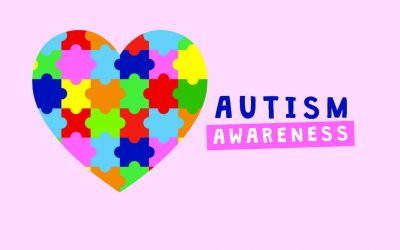Recovering From Autism
I am tex
By Joanne Richard For The Toronto Sun
Sam and Fannie DeCaria’s world came crashing down three years ago. Their son Giulio, then five, appeared normal physically but had developed troubling behavioural traits over two years.
“Giulio had an insistence on sameness. He would always wear the same red, black and white striped shirt and on laundry day would wait patiently beside the washer and dryer until his shirt was ready to wear again,” says Sam DeCaria.
“He was also overly sensitive to loud noises, had no desire to
interact with children his own age and became fixated on the turning
wheels on his toy cars,” adds the Etobicoke father of two boys.
Giulio was diagnosed with autism. “The diagnosis was numbing. We
were devastated,” DeCaria says.
“The word itself we associated with disturbing images of little
children flapping their hands and jumping around, absorbed and lost in
their own world,” he adds.
World Of Controversy
They entered a world raging with controversy and dissention amongst
medical experts.
Autism has reached epidemic proportions — its cataclysmic rise is
affecting millions of children worldwide. In Canada, this disorder is
currently diagnosed in up to one in 150 children; it strikes boys three to
four times more often than girls and can range from mild to severe.
The lack of scientific data, research and funding makes it difficult
to medically treat these children, and is especially frustrating and
disheartening for parents seeking information and solutions.
“We were advised to focus our energies on speech and behavioural
therapy. We were told that there was not much else available,” says
DeCaria. “All hope was taken away from us.”
But, according to DeCaria, he found a “window of hope” using a
multi-disciplinary approach, including dietary and biomedical treatments
advocated by two leading U.S. autism experts, Drs. Jeff Bradstreet and
Jerry Kartzinel, both who have autistic children.
“The first thing we did was put Giulio on a gluten/casein free diet.
Two months later, Giulio, who previously was speaking in one-word
sentences, amazingly was able to recite the Lord’s Prayer.”
Besides dietary changes, the DeCarias introduced other broad-based
therapies in order to alleviate and eliminate many of the common symptoms
and, in the past three years, Giulio’s progress has been immense.
“Children can recover from the symptoms of autism,” says DeCaria. “I
believe Giulio will eventually live a normal life and even get married.”
This multi-disciplinary approach, entitled Open Windows Essential
Training, will be presented in Toronto in June for parents, teachers and
the medical community. The comprehensive two-day workshop, hosted by the
Autism Canada Foundation, provides in-depth instruction on integrating medical,
behavioural and nutritional treatment options to help children with
developmental disorders maximize their potential.
According to Autism Canada Foundation director Cynthia Zahoruk, her
7-year-old son has recovered from many of the symptoms of autism through
the use of the treatment that’ll be introduced by Bradstreet and Kartzinel at
the Library Lecture Theatre at Ryerson University, on June 21 and 22.
Bradstreet and Kartzinel are the founders of the Florida-based
International Child Development and Resource Center (ICDRC) and have
dedicated themselves to researching new, effective treatments.
According to Zahoruk, “The current thought is there is a genetic
component to autism in the same way that someone may be genetically
predisposed to cancer or heart disease. These individuals are exposed to
an environmental trigger that could be a virus or a toxin, and this alters
the immune system in a way that affects the development of the brain.”
Bradstreet agrees. “I see this as an environmental effect.
Environment includes vaccines, infections, toxins like mercury and a great many other things,” says Bradstreet, whose son Matthew became ill after his childhood
MMR vaccine.
Obsessive Behaviour
Warning signs include unresponsiveness, trouble communicating,
difficulty in forming social relationships, lack of concentration,
language problems, and engaging in repetitive and other obsessive behaviours.
Early identification and treatment is key to possible recovery, says
Zahoruk. “An intervention that may be effective within a few months if
applied when the child is 24 months old, may take several years when the
child is seven.”
Mainstream medicine usually directs parents towards behaviour
modification called Applied Behaviour Analysis (ABA) program, “and little
else,” she says, adding that while ABA is a fundamental treatment for
autism, most individuals, if not all, will benefit far more by combining
it with other effective biological treatments.
According to experts, autism has become an epidemic that will
cripple our social support system and efforts must be made to finding a cure. “The
government needs to respond through early intervention before these kids
get older and we have to institutionalize them,” she says.
Early intervention is essential, agrees Bradstreet: “We are doing
everything we can to remove the Humpty Dumpty stigma — all of the King’s
horses and all of the King’s men couldn’t put Humpty Dumpty back together
again — from autism which prevents many doctors from even trying to
help.”
For more workshop info, visit www.autismcanada.org or call 905-332-4766
t block. Click edit button to change this text. Lorem ipsum dolor sit amet, consectetur adipiscing elit. Ut elit tellus, luctus nec ullamcorper mattis, pulvinar dapibus leo.


